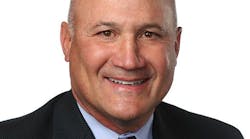My involvement in workplace violence prevention began in 1993 when I interviewed double workplace murderer Robert Mack in a California prison for my book, "Ticking Bombs." The year before, Mack had killed his boss and the HR representative assigned to his termination from General Dynamics in San Diego. I went to his prison cell and asked him why and that became the centerpiece for my book, one of the first on this subject.
At that time, the concepts of an active shooter or a mass public attack was still far off from our national thinking. We were six years from Columbine, eight from 9/11, and could not perceive the concept of the lone wolf militant Islamic fanatic as a threat on our shores. Fast-forward to today and add in another element that was missing at that time: national and social media.
The copycat factor in U.S.-based terrorism events, school shootings, workplace violence incidents, and shootings in our malls, churches, and movie theaters is real and hard to stop. Just as nearly everyone on the planet can identify Lady Gaga, Madonna and Brad Pitt, people also know the faces (if not always the names) of the school shooters at Columbine, Virginia Tech, and Sandy Hook, and could identify Bryce Williams/Vester Flanagan, the former TV reporter who killed two former colleagues in Roanoke during their live shot, and Dylann Roof, who killed nine at a Charleston, S.C. church. The fact that these attackers’ names and faces circle the planet within 15 minutes after they are identified points to the power of the national and social media to turn them from nobodies into somebodies, which is what they want and why they do what they do.
For the past 20 years, when I was a cop and after, I have belonged to the Association of Threat Assessment Professionals (ATAP). This collection of fellow paid-paranoids has 12 chapters around the U.S., a chapter in Canada, and a chapter in Europe. (The Europe ATAP chapter came into existence near the time of mass murderer Anders Breivik, who killed 77 kids and adults in Norway.)
The function of ATAP is both simple and complex: gather together the best thought leaders, researchers, and threat assessment and threat management practitioners into one organization (the easy part) and create methods, tools, and approaches to stop workplace violence, school violence, public-place violence, domestic violence, stalking, and terrorism (the very hard part). We are a band of like-minded thinkers and doers, currently offering a cautious mixture of hope and pessimism.
ATAP member and FBI Supervisory Agent Andre Simons has coined the useful phrase "threatscape" to define the areas where potentially violent perpetrators intersect with their targets, in workplaces, schools, malls, churches, and other public areas where they attempt to carry out their often highly-organized plans to harm. The good news is that we are seeing workplace homicide numbers fall year after year. The bad news is that schools are seeing more violence. The good news is that we are learning from each event and stopping more and more potential shooters before they cause a tragedy. The bad news is that future perpetrators are learning from our violence risk assessment methods and police tactics too, to perhaps be even more deadly than their predecessors. Our vigilance, and awareness of their "leakage" and warning behaviors, are our best defense when these actors move along the path from violent ideas to violent actions in the new "threatscape."
But by far the most troubling feature in these national and international attacks by lone wolf assailants armed with guns, bombs, and knives is how we have succeeded in making them infamous. (Miley Cyrus is famous; Eric Klebold and Dylan Harris are infamous, which they knew they would become after Columbine.) This distinction is a critical one because it speaks to the motives of these attackers: “I have lived a depressed, disconnected, disaffected life, with no real job, girlfriend, supportive family structure, or goals. I hate people because of this and they seem to dislike me. I have collected the many injustices directed at me my whole life and now, I will kill many people as I can for my revenge. I will dress like a commando and I will mimic my ‘idols’ who have killed before me – so that people will remember me and talk about my actions for decades. I will post words, photos, or videos of my discontent online, and provide the proof of my irrational life views, religious zealotry or racial hatred, my active and untreated mental illness, and my rage against the world. I know the national and social media will expose me to the entire globe minutes after I am dead or in jail because that is what they do.”
One of our post-incident goals after these events should be plaintive and simple: Can the national and international media – which drives social media as the initial provider of information – agree to only refer to these attackers as “John Does” and not publicize their names, photos, or Internet screeds? Can they agree on a global moratorium on publicizing only the event and not who was responsible for it, thereby giving empathy to the victims, survivors, and their families and not glory to the perpetrator?
We shouldn’t have to know that Mohammad Abdulazeez was the gunman who killed five service members in Chattanooga this summer, because to shine the media light on him is to give his miserable life more exposure than it deserves. I would be content to know only that he was a radicalized killer, so I can continue to protect my family, my colleagues, and my country from his kind.
As long as the international, national, and social media platforms turn these attackers into the pseudo-celebrities they desire to be, these events will continue. I have spent my entire adult life trying to keep people safe at work and students safe at school and I’m about as pessimistic about my future success as I have ever been. A moratorium on identifying these attackers would be a welcome start.
About the Author: Dr. Steve Albrecht is a San Diego-based threat assessment expert and security consultant. He holds the "Certified Threat Manager" (CTM) designation from the Association of Threat Assessment Professionals (ATAP). He has written 17 books on business, security, and criminal justice topics. He can be reached at [email protected] or on Twitter @DrSteveAlbrecht.


